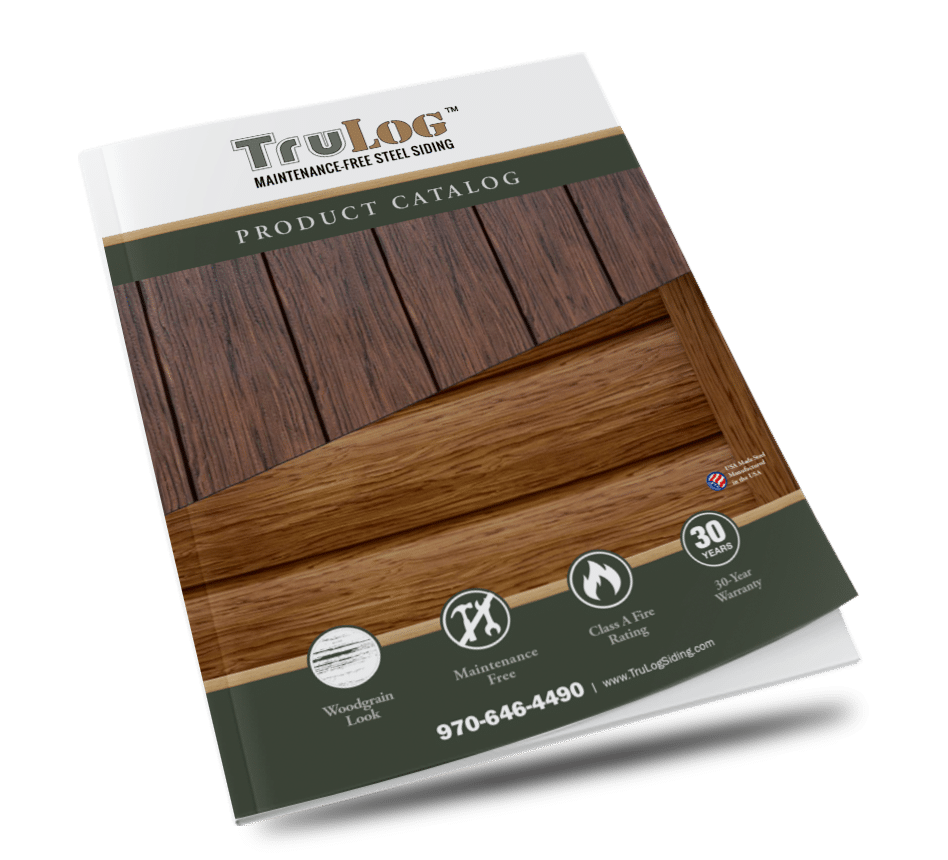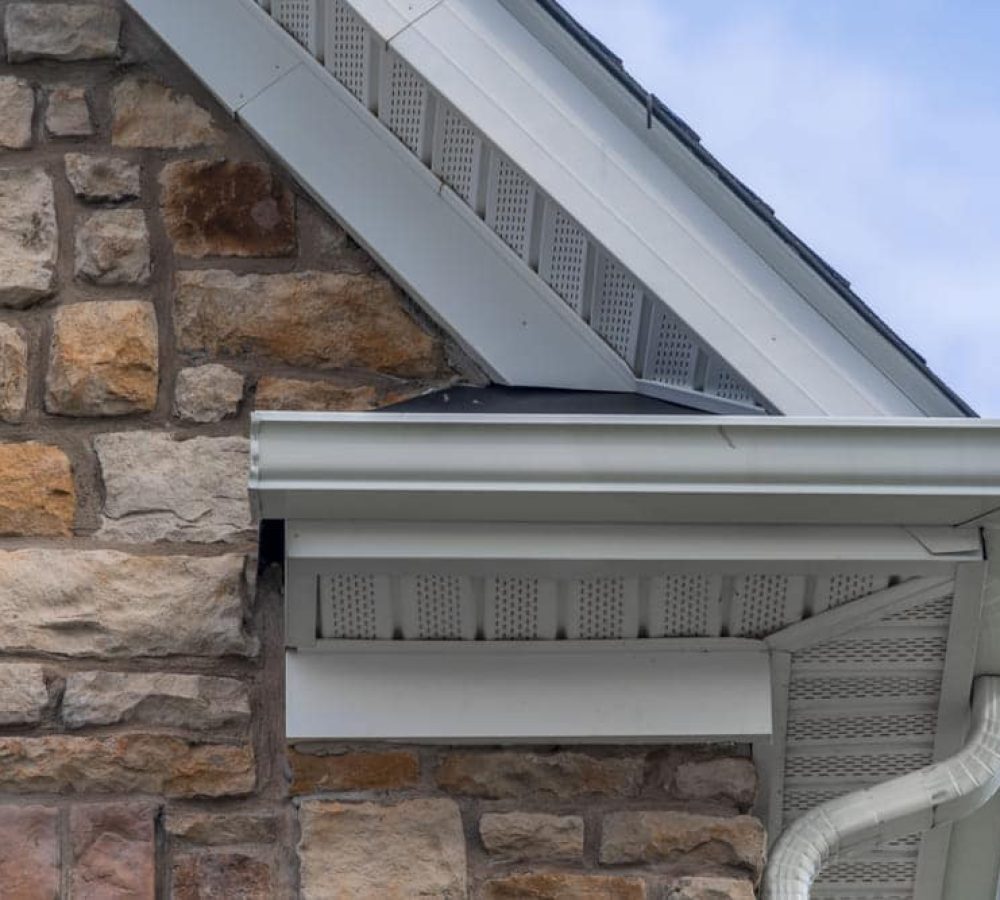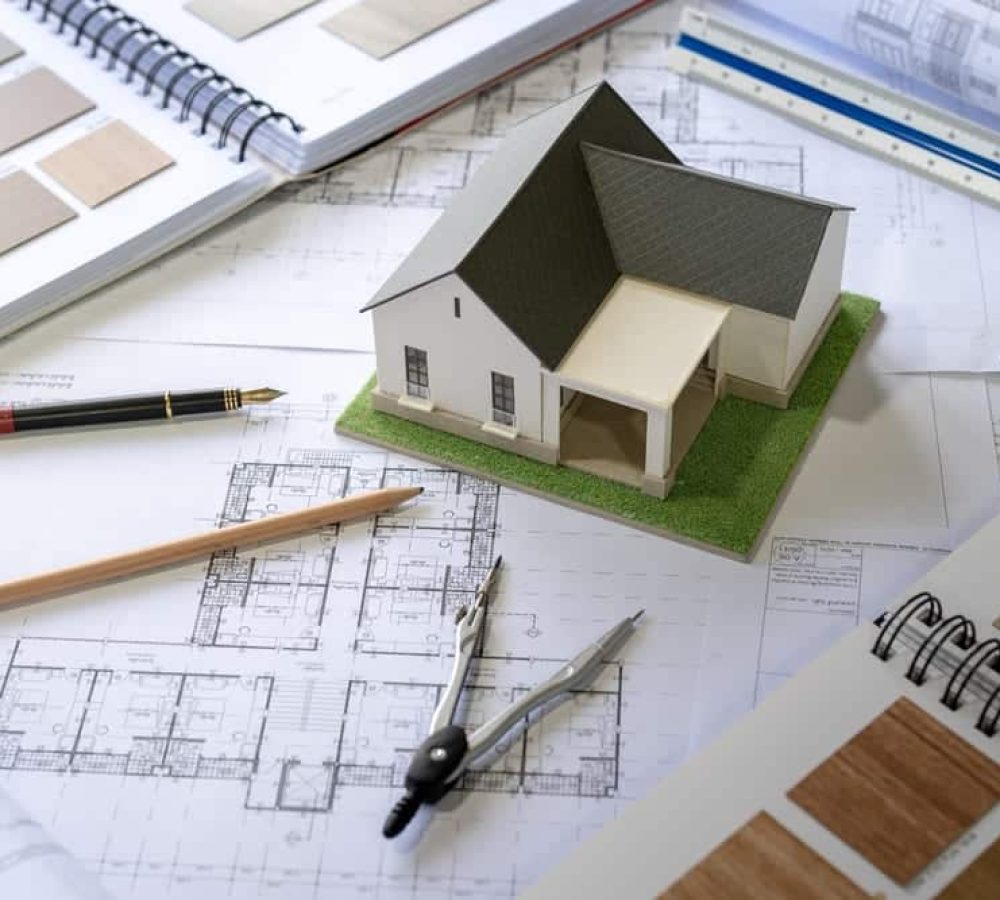Vertical siding is a popular style known for catching the eye and creating unique character. Wondering if vertical siding is right for your next remodeling project or new build? This comprehensive guide breaks down all the ins and outs of vertical siding, as well as the various material options available. In fact, the material choice can have a significant impact on how easy vertical siding is to install and how long it will last – that’s a section you don’t want to miss.
Before you buy, take a look at everything you need to know about vertical siding, followed up with several different examples of vertical siding design ideas that you can use to inspire your own style.
What is Vertical Siding Used For?
Sometimes referred to as board and batten, vertical siding uses orientation to create a distinct look. Originally used as a practical way to cover the outside of barns and other large farm structures, vertical siding quickly crossed over into residential use when builders realized that it had more to offer than efficiency alone.
The vertical orientation of the siding planks provides a striking impression that is now used to create distinct home exteriors with rustic charm. If simple, traditional architecture is more your style, then you’ll probably prefer the look of horizontal lap instead of vertical siding. However, if you’re drawn towards modern, coastal, rustic, and trendy textures, then there’s a good chance you’ll enjoy creating something special with vertical siding.

Advantages of Vertical Siding
Every design choice comes with pros and cons. Take a look at some of the biggest advantages of vertical siding:
Striking Visual Impression
Most homes have horizontal lap as a standard feature. Vertical siding switches up the exterior style and creates a striking impression that can actually make certain aspects of the home look taller than they really are. Whether visual height is your goal or you just love the look of vertical panels, there’s no debate – vertical siding stands out.
Easier to Clean than Horizontal Siding
A practical advantage of vertical siding is that it is typically easier to clean than horizontal siding. Since the panels are aligned vertically, water naturally runs down the surface towards the ground. Compare that with horizontal siding, where laps and ridges can cause moisture to sit or get trapped, leading to built-up grime and residue that is difficult to remove.
Unique Aesthetic Value
Vertical siding is used for all sorts of trendy, modern, and cottage-inspired designs. Unlike horizontal lap, vertical siding brings fresh perspective, dimension and style to the exterior.
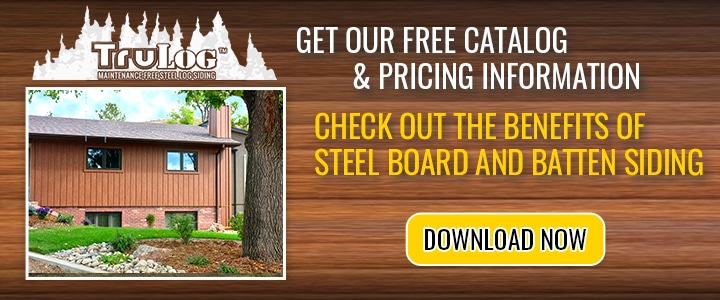
Drawbacks of Vertical Siding
These are two of the most common drawbacks of vertical siding.
Installation May Be Complex (Depending on Material)
If you’re sticking with natural wood, vertical siding installation can be tedious, costly, and exhausting. Wood requires a lot of close attention to detail in order to ensure proper installation – which is important, since gaps or loose beams can lead to big issues down the line. The good news is that other material choices, like steel, offer very easy, intuitive installation processes.
Distinct Style May Not Appeal to as Wide an Audience
Horizontal lap tends to have a wider audience because of its traditional look. If you plan on selling your house down the line, consider the fact that vertical siding may not appeal to as many potential buyers.
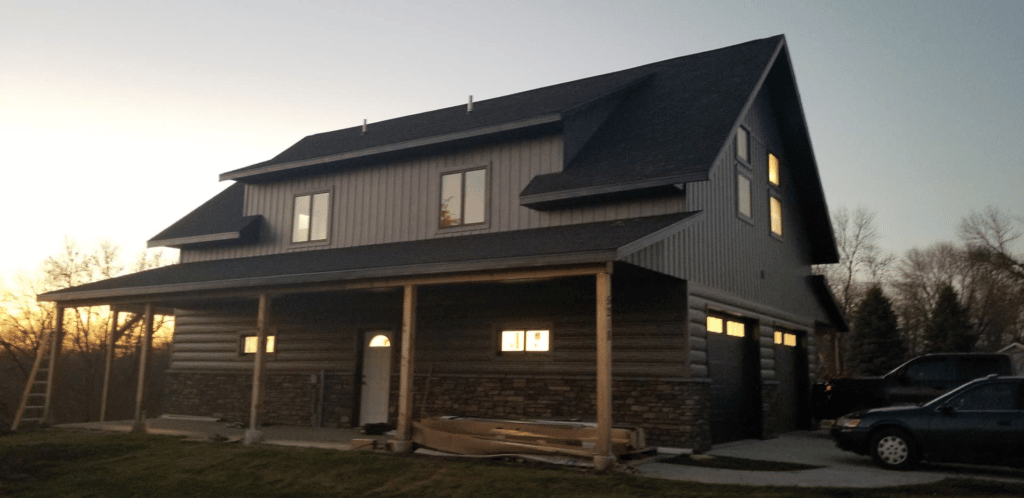
3 Popular Material Options for Vertical Siding
You have lots of material choices when it comes to vertical siding. But be careful – the material composition can have a big impact on how strong, durable, and long-lasting your vertical siding is.
Wood
Wood is the most traditional form of vertical siding, and while it certainly carries a nostalgic familiarity to it, wood is extremely difficult to maintain. Moisture, sun exposure, and pest control are three elements that often cause damage on wood siding.
Then, add in the fact that vertical siding made from real wood will require intensive upkeep, like caulking and repainting, every few years. Some homeowners don’t mind the cost and labor involved with authentic wood siding – but most prefer to choose an alternative material with lower maintenance.
Vinyl
There are some limited options available with vinyl, a material that is generally less fickle and easier to install than wood. Vinyl siding seems like an affordable choice because upfront costs are fairly reasonable, but it’s important to note that vinyl is not known for its durability.
Vinyl siding tends to crack and warp in areas that have freezing temps in the winter and considerable heat in the summer. Moreover, vinyl is known to accumulate mold and mildew in humid regions because of its smooth, plastic-based surface. This is usually more prevalent on north-facing walls and homes that are heavily shaded. Popular as a low-cost option, vinyl usually only lasts 10-15 years.
Steel
Vertical siding built from steel is recognized as the most durable, low-maintenance option for homeowners, regardless of region. Not only does steel siding have a Class A Fire Rating and Class 4 Impact Rating, but it is also crafted in a way that makes it incredibly fast and easy to install.
The biggest misconception with steel is that it will ‘look like metal’ – when in reality, there are lots of aesthetic styles to choose from, including steel siding that imitates natural wood patterns and tones. Textured designs feature authentic-looking wood grain patterns to recreate the charm of natural wood – without the risk of deterioration. In fact, you can get a 30-year warranty on vertical siding made from steel, a clear sign that it’s built to last.
Assessing Vertical Siding Cost vs. Value
Wood siding is a classic choice that requires careful installation, responsible sourcing, and high attention to detail. Wood siding can cost anywhere between $7,000 and $23,000 on an average-sized home, depending on sourcing, finish, labor, and other aesthetic choices. For that reason, homeowners on a budget often turn to vinyl vertical siding. Costing between $6,000 and $15,000 upfront, vinyl is considered the more affordable choice.
However, it’s important to consider the lifetime value of these different materials. Wood requires all sorts of upkeep to maintain, while vinyl rarely lasts longer than a decade or so. Compare that with steel vertical siding, which comes with a 30-year warranty and requires little to no maintenance. At $4.25 – $5.25 per square foot, it becomes apparent that steel siding offers a much better lifetime value. If you plan on keeping your new siding for more than a few years, steel is the way to go.

Vertical Siding Design Ideas
One of the big advantages of vertical siding is that it is extremely adaptable. Some homeowners like a uniform appearance, with vertical siding installed from corner to corner, foundation to roof. Others like to mix and match siding styles – adding vertical siding in some parts, with horizontal lap or shake in other areas, which is a great way to highlight the architectural details of a house. A third design approach is to mix and match materials, blending vertical siding with stone features, millwork and brick to create a unique look.
Need a few ideas before you finalize the design plans for your vertical siding? Take a look at these examples for fresh inspiration:
1. Fieldstone and Board and Batten Mix

Using stone veneer or fieldstone as an accent has become a very popular addition to home exteriors in recent years. Stone veneer can add some color and texture that brings life to the entire facade. This home features stone veneer around the base of the home and a vertical siding above. The vertical siding helps pull the eye upward, accentuating the height of the home and balancing out the stone veneer on the bottom.
2. Classic Brick Pairing

Many homes have a brick foundation that is visible beneath the edge of the siding. These homes are often traditional architectural styles, which means that they need a traditional siding style to match. Board and batten is one of the oldest forms of siding in America, first introduced by the first sawmills, so it makes a great choice for completing a traditional-style home.
3. Gable Accent

This home is primarily clad in steel, log-look siding. To give it more interest and dimension, it also features a matching steel board-and-batten siding just below the roof gable. This helps draw the eye upward, making the roof seem taller. At the same time, the matching color and texture of the two sections creates a very subtle and unified appearance for the exterior, bringing it together nicely.
4. Modern Farmhouse
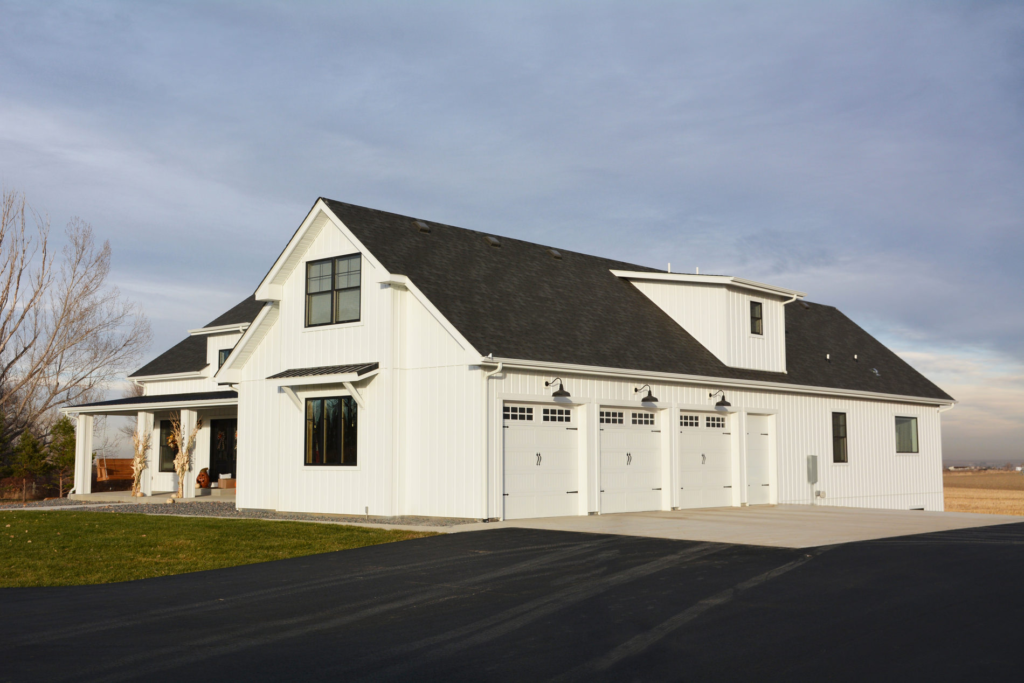
The modern farmhouse has rapidly been growing in popularity. Modern farmhouses incorporate many of the attributes that made the original farmhouse so popular, but with newer amenities such as more durable siding and wider front porches. Many new farmhouses are clad in white due to the crisp color and appearance. This farmhouse features a white vertical siding, which captures the history of the farmhouse, and gives it a new, modern appearance.
5. Natural Colors
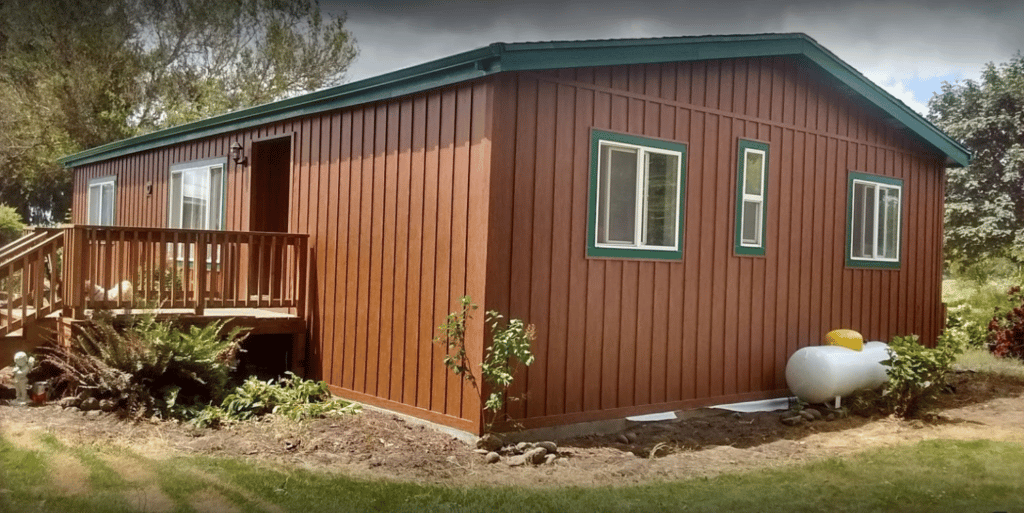
This home features steel board-and-batten siding and a standing seam metal roof. The two areas not only complement one another in material, but also in their color palette. The red-brown of the siding has a natural appearance reminiscent of redwood, while the roof and the trim add a natural green color that blends well and adds enough contrast to help it stand out.
6. Three-Part Exterior

This large home has a lot of siding to cover, and it breaks things up nicely by using a mixture of vertical siding, shingle siding, and the natural brick foundation. The vertical siding has a seam that continues from the front of the house to the back, just above the lower section that drops away with the landscaping. This creates a nice line for the eye to follow, and helps to accentuate the size and shape of the property. It also helps keep things interesting by mixing up the materials and lines, avoiding the problem that many larger homes have with one type of material over too large an area.
7. Matching Roof and Siding Lines

This home features steel siding and a metal standing seam roof. It’s common for many homeowners who choose a durable exterior material like steel to want to incorporate it over the entirety of the facade. By choosing a vertical board and batten siding, it helps create a flowing set of lines from the roof down the wall, giving the home continuity and interest at the same time, as well as the durability and protection of steel.
8. Clean White Color

White siding is one of the most popular colors and styles for homes today. The clean color works on nearly every architectural style and in every region. Vertical siding is an ideal choice for white, as the lack of horizontal shadows that lap siding creates helps make for a crisper looking facade. The natural wood accents in the balcony of the home make a nice contrast to the white siding both in color and in the change of direction it takes, calling attention to this part of the home.
9. Narrow Plank Board and Batten

This home features vertical siding over its entirety, including the chimney. To bring it more depth and interest, it uses a more narrow plank than some board and batten sidings, which may feature a wider plank. This creates a more pronounced look for the siding, emphasizing its placement and direction on the home.
10. Matching Garage

Homes that have multiple buildings as part of the property have several options for siding. Some will mix and match materials and styles, while others opt for a more cohesive appearance. This property uses the same color and style of vertical siding on both the home and the detached garage, creating one unified look for both. Using the same siding over the entirety of the home also helps keep the overhang on the split level together visually, rather than breaking it up further.
Choose a Siding with Strength from TruLog
TruLog provides maintenance-free steel vertical siding that eliminates many of the worries with traditional siding materials. With wood look vertical, lap, and even log siding, TruLog offers the aesthetic of classic wood with the strength and durability of steel.
Contact TruLog today to discover metal wood-look siding options that look great and provide long-term, maintenance-free durability.

